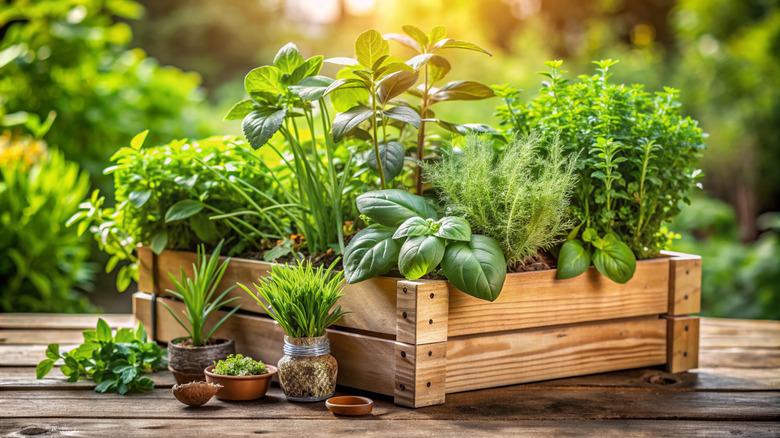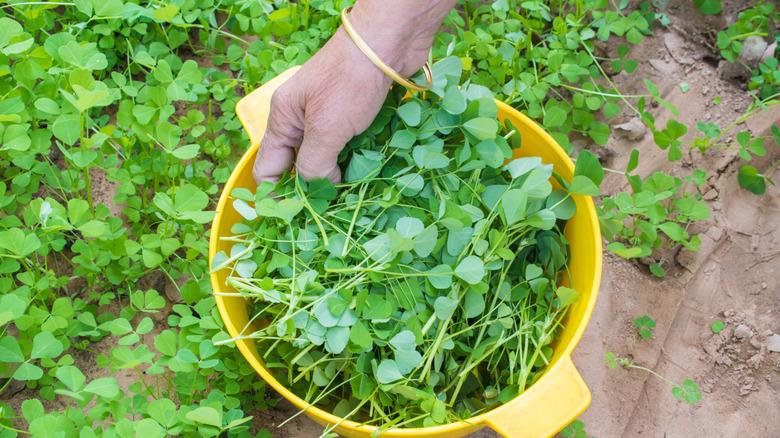The Easy-To-Grow Herb That Will Enrich The Soil In Your Garden All On Its Own
As many professional and amateur gardeners are aware, plants need a variety of nutrients in their soil, such as nitrogen, phosphorus, and even sulfur, in order to thrive. You can even make homemade potassium to add to your mix. If your plants have yellow leaves and are wilting or stunted, this may be a sign that your soil is lacking nitrogen, which is key to helping plants turn sunlight into fuel and avoid disease and infection. When planting vegetables, for example, Colorado State University recommends that the soil should contain around 40 parts per million of nitrogen. But can you boost your soil's nitrogen without the need for chemical additives?
Meet fenugreek (Trigonella foenum-graecum L.). This green, thin-leaved herb has been used for its medicinal properties for thousands of years and is commonly found in flavoring for food, drinks, tobacco products, and spice blends due to its seeds that smell and taste like maple syrup. But this plant can also be a superhero for any garden that is lacking nitrogen. It works by pulling nitrogen out of the air and depositing it in the soil, meaning that all the surrounding plants can access it as well. By adding nutrients back into the soil, fenugreek can help your garden to be stronger, taller, and even more resilient than before.
How to plant, harvest, and use fenugreek
Fenugreek does not do well when transplanted, so it is best to grow it from seed. The ideal time to plant this herb is in late spring or early summer, with seeds approximately 2 inches apart to give them ample space to grow. This plant also prefers full or partial sun and benefits from the addition of home compost, which can lead to better growth and a higher yield. Additionally, well-drained soil is best for fenugreek as it prevents the roots from being affected by rot, so over-watering this plant should be avoided.
You can harvest the leaves from your fenugreek as early as 30 days after planting by carefully removing them and leaving the roots in place. The leaves (which are known as methi) can be added fresh or dried to various food dishes for additional flavor. Collecting the seeds takes a little longer, however, and you will need to wait until the plant has started to die off around July to October — depending on when it was planted — before you can harvest them. You can also choose to uproot the whole plant when it is done growing to make room for other herbs or vegetables that will benefit from the now nitrogen-rich soil. This plant and its seeds can be used in a variety of ways, from spice mixes to stir fries and even tea. However, it is important to note that consuming an excessive amount of fenugreek is not safe for use during pregnancy, and large doses can result in potential side effects such as nausea or diarrhea.

